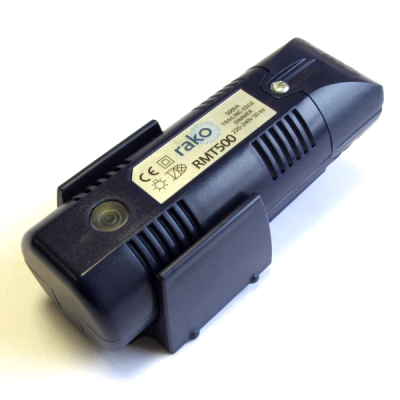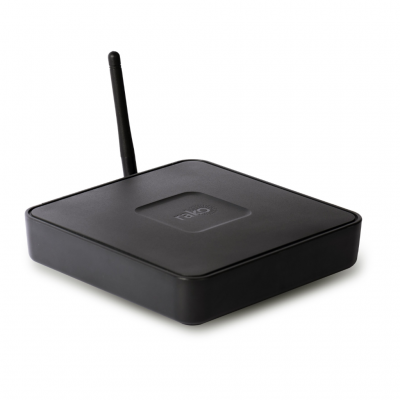Lighting is an essential aspect of interior design that can significantly influence the atmosphere, functionality, and style of a space. When it comes to DIY residential lighting design ideas in the UK, the main focus is on creating a comfortable and inviting living space while keeping in mind sustainability and local regulations. This article will explore the importance of good lighting, the role of lighting in home design, and some key principles of lighting design. In addition, you'll be presented with DIY lighting ideas tailored to specific rooms in your home, ensuring a comprehensive and engaging understanding of residential lighting design.
Understanding the Importance of Good Lighting
Good lighting can transform a space, setting the right mood, and providing comfort. It can also enhance the functionality of your home by tailoring the lighting to suit the activities carried out in specific rooms. Ultimately, investing time and effort into designing the perfect lighting for your home can significantly improve your overall living experience.
Lighting design plays a crucial role in home design by not only illuminating spaces but also highlighting architectural features, complementing the colour scheme, and influencing the overall ambience. A well-thought-out lighting plan can add depth and dimension to any room, creating a harmonious balance between form and function.
A successful lighting design incorporates three main types of lighting:
-
Ambient lighting: This refers to the general illumination of a space that provides uniform brightness. Examples of ambient lighting include ceiling lights, wall-mounted lights, and floor lamps.
-
Task lighting: This type of lighting is tailored for specific tasks, such as reading or cooking, and typically comes in the form of targeted fixtures like desk lamps or under-cabinet lighting.
-
Accent lighting: Accent lights are used to draw attention to particular features and enhance the visual appeal of a space. Examples include picture lights, wall sconces, and downlights.
Colour temperature plays a vital role in defining the atmosphere of a room. Cool temperatures (around 5000 Kelvin) create a crisp, bright ambience, whereas warmer temperatures (around 2700 Kelvin) foster a cozy, relaxing atmosphere. Additionally, it's essential to consider the colour rendering index (CRI), a measurement of how accurately a light source renders colours. A high CRI will produce a more vibrant and natural-looking environment.
DIY Lighting Ideas for Different Rooms
In the living room, consider incorporating layered lighting that includes ambient, task, and accent lighting. This can be achieved by combining different types of fixtures, such as floor lamps for cozy ambiance, table lamps or reading lights for task lighting, and spotlights or track lighting to emphasize artwork or architectural features.
To enhance the visual appeal of your living room, consider using accent lighting to draw attention to artwork, decorative pieces, or unique architectural details. Track lights, picture lights, or wall sconces are ideal choices for this purpose.
Kitchen Lighting Ideas
In the kitchen, task lighting is crucial around workstations and prep areas. Installing under-cabinet lighting, such as LED strips or puck lights, ensures that your countertops are well lit and reduces the risk of accidents.
For additional lighting in the kitchen, consider hanging pendant lights above your island or dining area. This not only provides extra illumination for cooking and dining but also adds an aesthetically pleasing focal point to your kitchen.
Bedroom Lighting Ideas
When designing bedroom lighting, it's essential to create a soft and inviting atmosphere. Adding table lamps or wall-mounted reading lights on either side of the bed provides ideal task lighting while keeping the overall ambience warm and cozy.
To create a relaxing environment in the bedroom, consider adding ambient lighting in the form of floor lamps, wall sconces, or even a dimmable ceiling light.
Bathroom Lighting Ideas
Safety is of utmost importance in the bathroom. Choose lighting fixtures that are designed for wet or damp locations and always follow local building regulations.
To ensure adequate lighting around the bathroom vanity, opt for wall-mounted fixtures on either side of the mirror or an overhead light. This minimises shadows and helps with tasks like grooming and applying makeup.
Outdoor Lighting Ideas
For outdoor lighting, illuminating pathways and steps with low-level bollard lights or in-ground lights adds safety and visual appeal to your home's exterior.
Adding decorative string lights to your patio or deck can create a warm and inviting atmosphere, perfect for entertaining or unwinding after a long day.
Energy Efficiency and Sustainability
To boost your home's energy efficiency, opt for LED lighting, which lasts longer and is more eco-friendly than incandescent or halogen bulbs.
For outdoor lighting, solar-powered lights are an excellent option, requiring no wiring and harnessing sunlight to power the lights at night.
Lighting Regulations in the UK
In the UK, lighting design and installation must adhere to Building Regulations Approved Documents, including Part L (Conservation of Fuel and Power) and Part P (Electrical Safety). Ensure that your DIY lighting project complies with these regulations to avoid legal complications.
Whether you're installing new lighting fixtures or updating existing ones, it's essential to follow safety guidelines and best practices, such as turning off the electricity, double-checking wire connections, and using appropriate hardware.
Conclusion
In conclusion, well-designed lighting can truly elevate the aesthetics and functionality of your home. By following the principles and ideas outlined in this article, homeowners can create beautiful and versatile living spaces that inspire joy, productivity, and relaxation.
Embrace your creativity and take on DIY residential lighting design projects in the UK. With a bit of research, planning, and attention to detail, you can create stunning, functional, and sustainable lighting environments that will transform your home and make it a truly inviting space.
Lighting Controls for Mood and Atmosphere
Incorporating different lighting controls into your DIY residential lighting design can have a significant impact on the overall mood and atmosphere of your living spaces. By utilising dimmers, smart controls, and app-controlled lighting, you can create customised, mood-enhancing environments tailored to your preferences and lifestyle.
Light Dimming for Added Ambience
Installing light dimmers is an excellent way to add versatility to your lighting design. With dimmers, you can control the brightness of your lights, allowing you to create various moods and atmospheres within your space. For instance, you can lower the intensity of your lights to create a cozy, intimate environment for a romantic dinner or movie night. Alternatively, you can increase the brightness for a more lively and energetic vibe during social gatherings or when you need adequate task lighting.
It is also worth investing in dimmable LED bulbs compatible with your dimmer switch, ensuring a smooth transition between brightness levels and further enhancing the ambience in your home.
Lighting App Control for Convenience and Customisation
By incorporating smart lighting or app-controlled lighting systems into your home, you can control all aspects of your lighting design from the convenience of your smartphone or tablet. This offers several benefits, such as:
-
Centralised control: Manage your entire home's lighting from one device, turning lights on or off, adjusting brightness levels, and selecting colours or light scenes.
-
Customisation: Create unique light scenes tailored to specific activities, such as reading or entertaining, with just a few taps on your device.
-
Scheduling: Set your lights to turn on or off automatically at specific times of the day or night, perfect for giving the impression of someone being home while you're away or for a smooth wake-up routine with gradually increasing light levels in the morning.
-
Energy efficiency: Save energy by monitoring and adjusting your lighting use through the app, ensuring that your home is always optimally lit without wasting electricity.
-
Voice control: Many app-controlled lighting systems are compatible with smart home hubs like Amazon Echo, Google Home, and Apple HomeKit. This compatibility allows you to control your lighting using voice commands, offering even greater ease and convenience.
In conclusion, integrating light dimming and app-controlled lighting can greatly enhance your DIY residential lighting design ideas in the UK. These innovative yet accessible solutions allow you to create customized atmospheres within your home while providing convenience, energy efficiency, and improved functionality.
FAQs
Can I create different moods in my home using lighting controls like dimmers and smartphone apps?
Yes, you can easily create various moods and atmospheres in your home by incorporating lighting controls, such as dimmers and smartphone apps. Dimmers allow you to adjust the brightness of your lights easily, while app-controlled lighting systems provide a wide range of customisation options, including light scenes, colours, and scheduling.
Which DIY residential lighting design ideas work best for small spaces?
For small spaces, consider using wall-mounted or ceiling-mounted fixtures to save floor space. Additionally, you can use mirrors to reflect and enhance natural light, creating the illusion of a larger room. Lastly, opt for multiple, targeted light sources that control the spread of light, ensuring a more spacious appearance and highlighting specific areas in the room.
How do I ensure that my DIY lighting project follows UK regulations?
Research Building Regulations Approved Documents, including Part L (Conservation of Fuel and Power) and Part P (Electrical Safety) to ensure that your DIY lighting project is compliant with UK regulations. Additionally, if you have any doubts or concerns, consult a qualified electrician to help you navigate the complexities and ensure your project's safety and legality.
What type of light bulbs should I use for my energy-efficient DIY lighting project?
To maximise energy efficiency, opt for LED bulbs over traditional incandescent or halogen bulbs. LED bulbs consume far less energy, last longer, and generate less heat, making them a sustainable and cost-effective choice for your DIY residential lighting design project.
How do I choose the appropriate colour temperature for my DIY lighting design project?
The choice of colour temperature will depend on the desired mood and atmosphere of your living space. Cool temperatures (around 5000 Kelvin) create a more vibrant, crisp ambience, suitable for task-oriented areas like home offices or kitchens. In contrast, warmer temperatures (around 2700 Kelvin) are ideal for creating cozy, relaxing environments, such as bedrooms or living rooms. It's essential to select bulbs with high Colour Rendering Index (CRI) values to ensure that colours appear natural and vibrant.

Rako Lighting Controls Systems

Rako Keypads

Rako Dimmers

